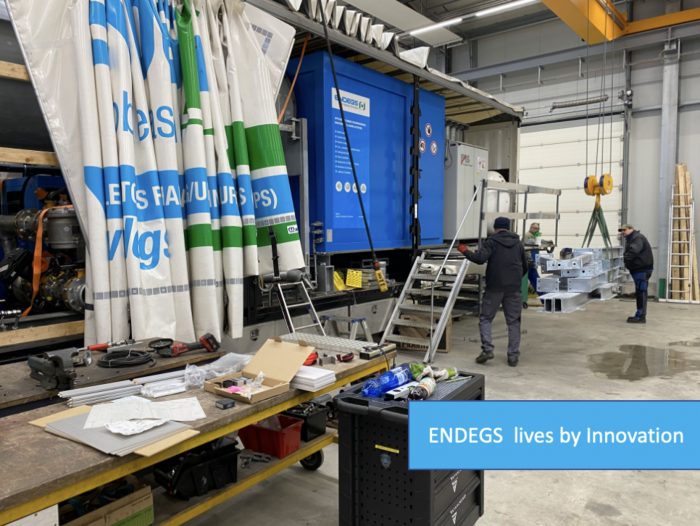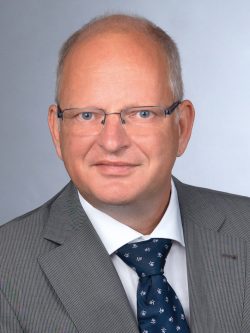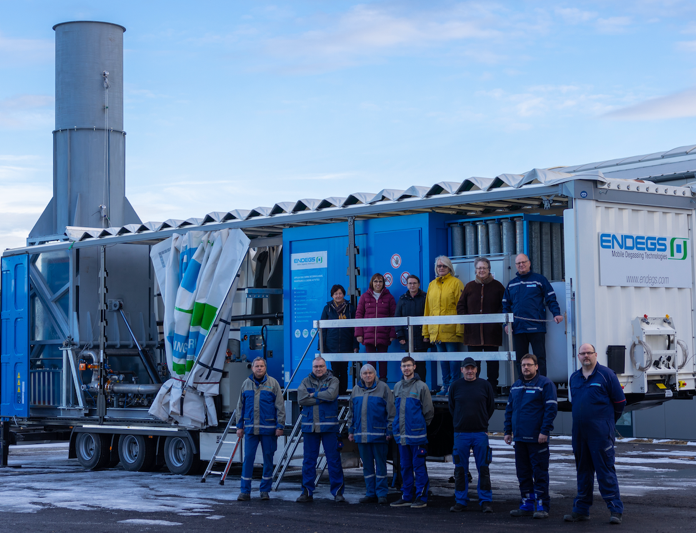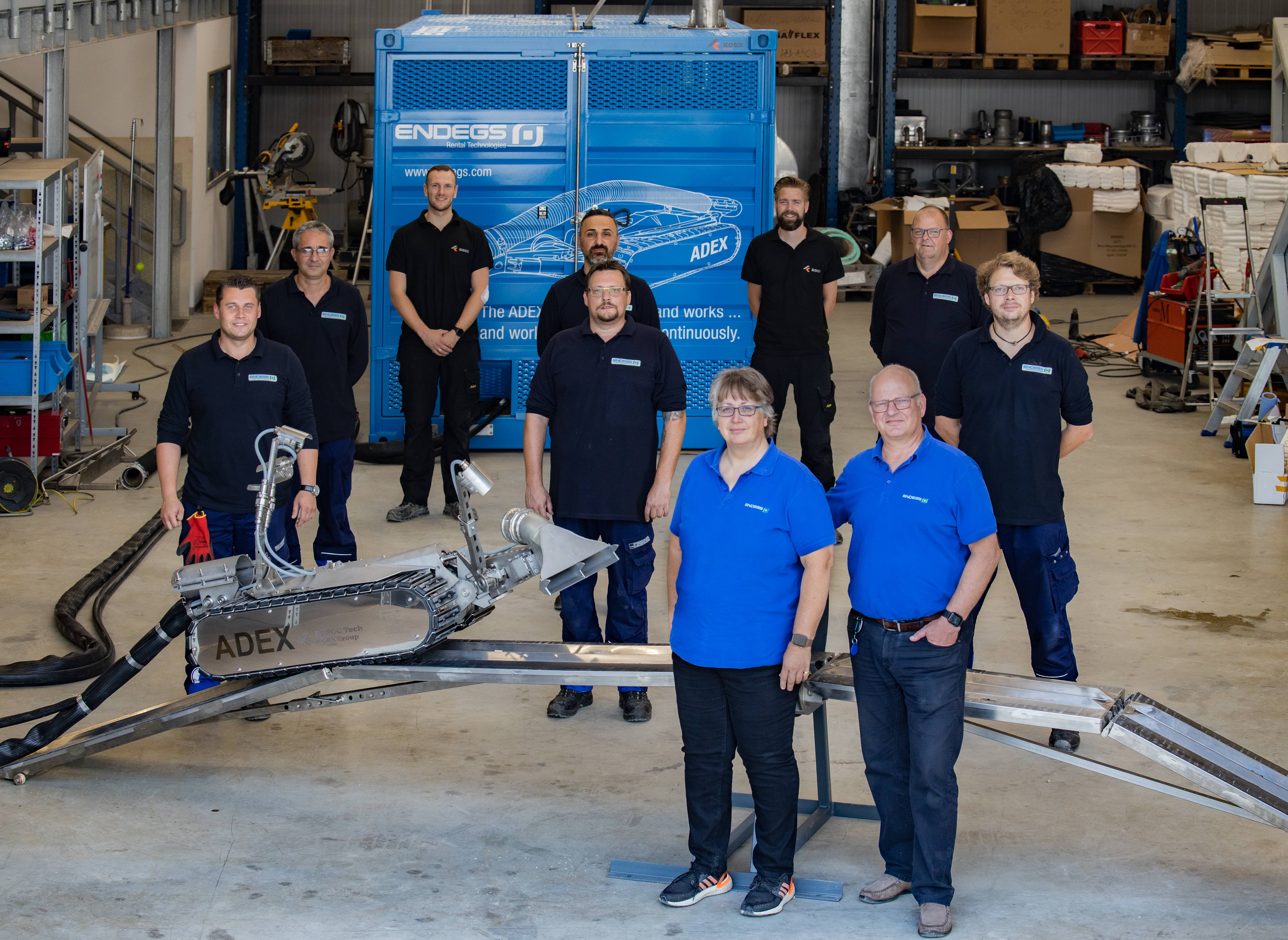Die Zukunft ist heute.
Blog / News / Aktuelles
TOP 100 Innovator
„Our company lives by innovation“

Since the company’s founding in 2007 my family and I have had a clear mission. We want to see to it that fewer hazardous emissions get into the air. We want to contribute to protecting the wonderful world around us.
13 years after our company got its start, we now hold the TOP 100 award in our hands. On top of that, this recognition as one of the 100 most innovative German SMEs came in the very difficult corona year. That makes me incredibly proud, and is also a motivation to not slacken, but keep on going forward.
Let’s take a look back over what has happened during the past 12 years.

Managing Director Kai Sievers
In 2007 I asked myself as an engineer how it might be possible to design a mobile device for degassing VOC & HAP (Hazardous Air Pollutants) of storage tanks, tanker ships and pipes during maintenance or in case of non-functioning of existing infrastructure, including where this was not possible at the time. It seemed to be absurd to simply accept that gases and vapours had to be released to the atmosphere, thousands of tons of them a year, for lack of a suitable solution.
In 2008 we developed the world’s first trailer-mounted, autonomous, fully equipped combustion chamber for burning off hazardous gases. Since then, our leading-edge and patented technologies have enabled the on-site combustion of hazardous, explosive and/or toxic gas mixtures, safely and very nearly completely. Our systems reduce emissions by over 99.99 percent. Thus, we make a substantial contribution to reducing emissions in Europe, North Africa and soon in Asia.
 Innovation on top of innovation
Innovation on top of innovation
But once you start it’s hard to stop. And with any invention, you keep seeing ways to improve it. So, we soon developed and patented a process that takes care of other pollutant streams (for example from a suction truck or temporary storage tanks) during tank degassing.
Shortly thereafter followed a patent that reduces the consumption of operating resources and extends the scope of applications.
In 2010 we were the first company in the world to start burning off ammonia with excellent measured results. Today we’re in demand worldwide for degassing ammonia vessels. Further development work to the combustion chamber allows us to degas substances that tend to polymerize, without smoke or flame and without polymerization, giving us another unique capability.
We’ve developed solutions that allow the use of heating oil instead of gas for auxiliary firing, which enables degassing at sites where liquid gas is unavailable.
We also developed and certified systems for explosion group IIC products (like hydrogen), so now we’re the only provider of safe degassing for all hazardous substances of explosive classes – IIA, IIB, IIC.
In order to be able to degas liquid and gas tankers on the Rhine in Germany, the company has brought forward suggestions for amendments to regulations in the ADN (European Agreement concerning the International Carriage of Dangerous Goods by Inland Waterway) and in bodies like the CDNI (Convention on the Collection, Discharge and Reception of Waste arising from Rhine and Inland Navigation). ENDEGS cooperates with the Port of Duisburg to create the first legal option for the environment-friendly degassing and removal of cleaning water from tanker ships. Here, customers come to us for a change.
 One of the things we’ve done recently was build another 10 MW mobile degassing system this year. Now degassing can be done plug and play with just one trailer in places formerly needing 2 x 5 MW or 4 x 2.5 MW units. This saves transportation costs and setup time. It doesn’t take up much space. The system is ideal for applications involving high throughput and high concentrations, such as occur with raw gases with high energy density.
One of the things we’ve done recently was build another 10 MW mobile degassing system this year. Now degassing can be done plug and play with just one trailer in places formerly needing 2 x 5 MW or 4 x 2.5 MW units. This saves transportation costs and setup time. It doesn’t take up much space. The system is ideal for applications involving high throughput and high concentrations, such as occur with raw gases with high energy density.
Safe work inside tanks
 Motivated by the desire to minimize the health risk to cleaning workers, in 2020 we took a completely new step. We started renting out ATEX Zone 0 robots (ESOT system) for the remote-controlled cleaning of storage tanks and pits in the chemical, petrochemical, automotive, food and other industries. What makes this important is that where previously people had to do the work at great risk, under rigorous safety precautions and wearing gas masks and hazmat suits, now a robot does it. The project was the brainchild of four of our employees, who developed and implemented it, and it has now gone through initial refinements. The result is a significant reduction in health and accident risks for cleaning crews.
Motivated by the desire to minimize the health risk to cleaning workers, in 2020 we took a completely new step. We started renting out ATEX Zone 0 robots (ESOT system) for the remote-controlled cleaning of storage tanks and pits in the chemical, petrochemical, automotive, food and other industries. What makes this important is that where previously people had to do the work at great risk, under rigorous safety precautions and wearing gas masks and hazmat suits, now a robot does it. The project was the brainchild of four of our employees, who developed and implemented it, and it has now gone through initial refinements. The result is a significant reduction in health and accident risks for cleaning crews.
This is just one example of how our people take the initiative on innovating and securing our future viability. Inspired by the corona situation, we jointly decided to build a studio for improved digital communication, so we can provide the customer-specific training that is so important, without risk to anyone.
Innovation performance ahead of the competition
Our company lives by innovation, and ENDEGS frequently stands out as the market leader in industry comparisons. Not only do we hold EU patents, but we’re also constantly working on new ones. We score high on real-world testing too, like we did recently with the mobile petrol degassing of an inland tanker at the port of Rotterdam (the objective was to test the safety of the system as well as measure the emissions). The result was that we were 40 percent faster than others, meaning 40 percent less berth time for the tanker, which is a huge cost saving, and our emissions were lower than the competition by a factor of 20. Local authorities were delighted.
All of this makes me extremely proud, the more so as the Top 100 seal now also makes our innovativeness visible to all. And it’s not just in Germany. Our technologies are greatly appreciated internationally as well. Customers let us know that they perceive us as unique.
Five goals drive us on
Like I said, we aren’t standing still. Our goals for the coming years are:
- Further reduce hazardous emissions in industrial maintenance.
- Protect workers involved in the degassing process to the greatest possible degree.
- Prevent the creation of hazardous waste (not possible with other currently available technologies).
- Further reduce the amount of chemicals used.
- Find new applications where degassing was not formerly used, and where gases and vapours are released into the atmosphere.
So, let’s all of us keep at it! My thanks go out to all our employees, customers and partners, who have not just supported us on this journey, but made it possible in the first place.
Kai Sievers
Cookie Consent
This website uses cookies and similar functions to process end device information and personal data. The processing serves to integrate content, external services and elements from third parties, statistical analysis/measurement, personalized advertising and the integration of social media.Depending on the function, data is passed on to third parties and to third parties in countries in which there is no adequate level of data protection and is not processed by them, e.g. e.g. the USA.
Your consent is always voluntary, not required for the use of our website and can be rejected or revoked at any time using the button at the bottom right.
More information can be found here > Privacy & Cookies Policy
Accept all Reject
Cookie settings
Privacy Overview
| Cookie | Duration | Description |
|---|---|---|
| _security_* | 1 day | This cookie is set by the WP Cerber Security Plugin and is used to differentiate between the different user types and the associated protection against bots. |
| cookielawinfo-checkbox-necessary | 1 year | This cookie is set by the GDPR Cookie Consent Plugin and is used to record the user's consent to the cookies of the "Necessary" category. |
| CookieLawInfoConsent | 1 year | Records the default button state of the corresponding category & the status of CCPA. It works only in coordination with the primary cookie. |
| Cookie | Duration | Description |
|---|---|---|
| _ga | 2 years | The _ga cookie, installed by Google Analytics, calculates visitor, session and campaign data and also keeps track of site usage for the site's analytics report. The cookie stores information anonymously and assigns a randomly generated number to recognize unique visitors. |
| _ga_* | 2 years | This cookie is installed by Google Analytics. |
- Why ENDEGS
- Markets & Applications
- Technologies & Services
- Dependability & Sustainability
- Blog
- Locations & Contact
